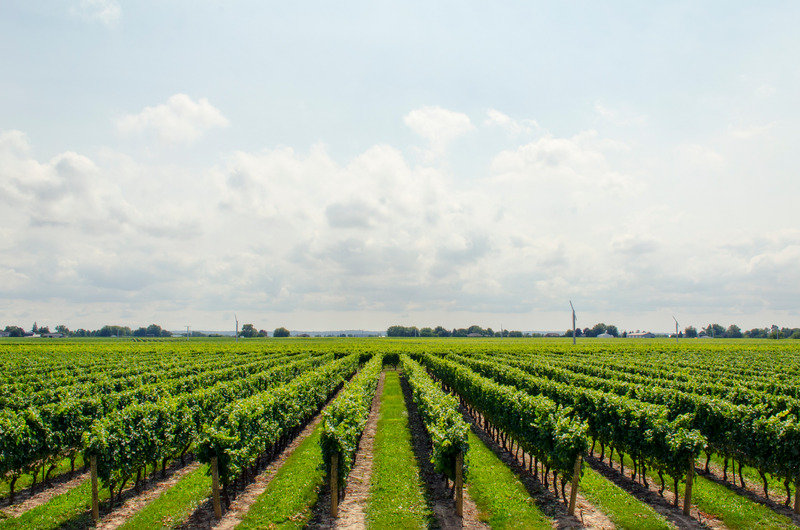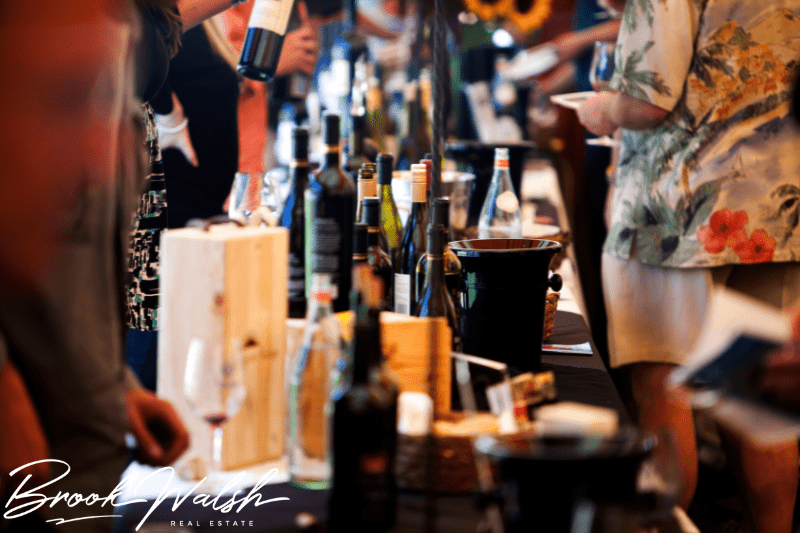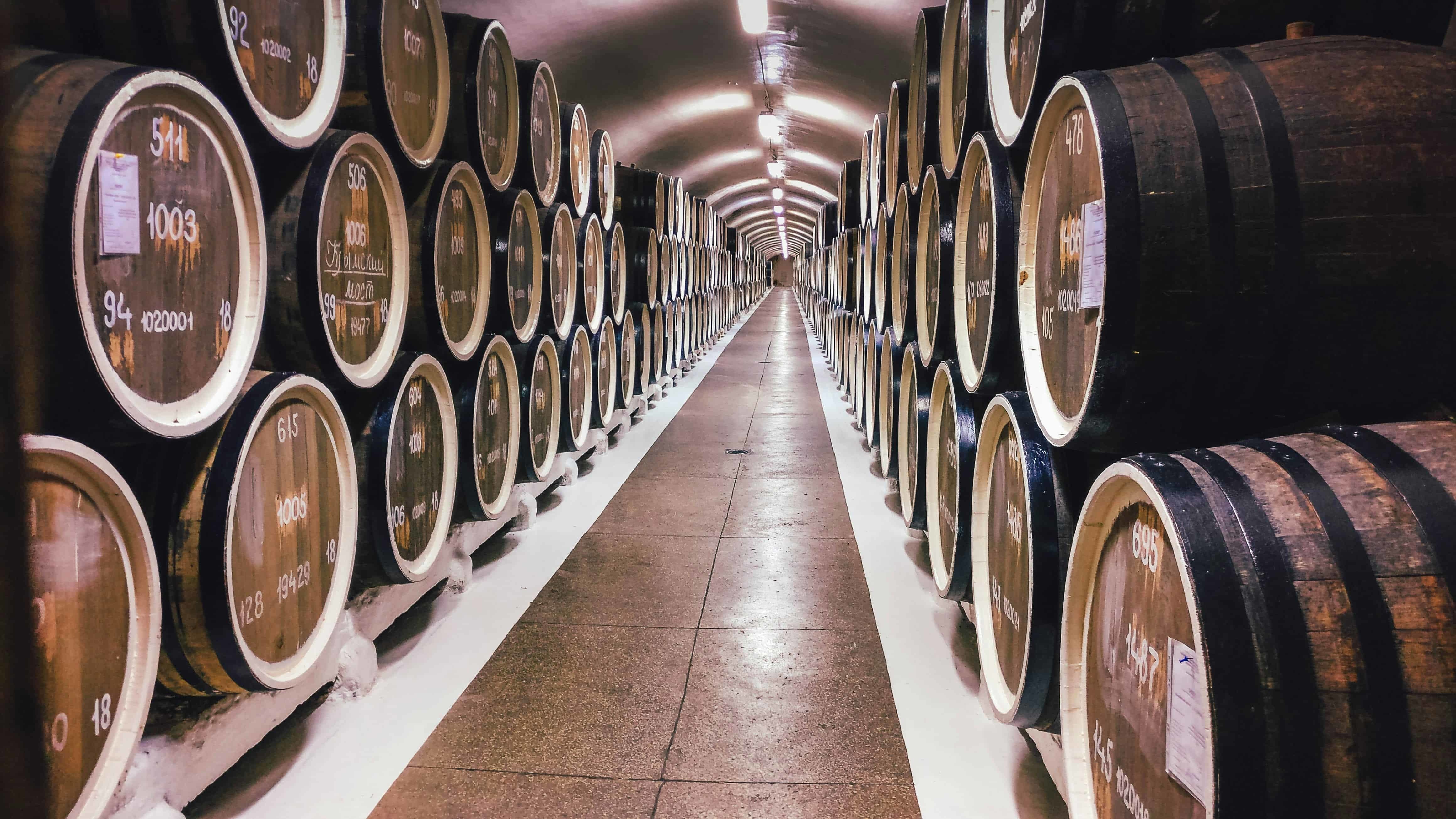Introduction

Nestled along the shores of Lake Michigan, Charlevoix is a charming town known for its stunning natural beauty, historic architecture, and vibrant cultural scene. This picturesque destination offers visitors a perfect blend of outdoor adventure and small-town charm. Among its many attractions, Charlevoix has become a notable spot for wine enthusiasts, boasting a burgeoning wine culture that adds a unique flavor to the region.
Charlevoix's wine culture is deeply intertwined with its agricultural heritage and scenic landscapes. The area's climate and fertile soil create ideal conditions for viticulture, allowing local wineries to produce a diverse range of high-quality wines. From family-owned vineyards to boutique wineries, Charlevoix offers a rich tapestry of winemaking traditions. Whether you're a seasoned oenophile or a curious newcomer, exploring the wineries in Charlevoix is a delightful journey through the flavors and stories of Michigan's wine country.
History of Winemaking in Charlevoix

Early Beginnings of Winemaking in the Region
The history of winemaking in Charlevoix, Michigan, dates back to the early settlers who recognized the region's potential for agriculture. The area's climate, influenced by Lake Michigan, provided a unique microclimate conducive to growing grapes. Early vintners experimented with various grape varieties, gradually honing their techniques to suit the local terroir. These pioneers laid the foundation for what would become a flourishing wine industry.
Key Developments and Milestones in Charlevoix's Winemaking History
1960s-1970s: The Emergence of Commercial Wineries
The 1960s and 1970s marked the emergence of commercial wineries in Charlevoix. Visionary entrepreneurs saw the potential in the region's natural resources and began to establish the first vineyards and wineries. These early ventures focused on producing wines that reflected the unique characteristics of Charlevoix's soil and climate.
1980s: Recognition and Growth
By the 1980s, Charlevoix's wine industry started gaining recognition. Local wines began winning awards at state and national competitions, drawing attention to the quality and potential of Charlevoix wines. This period saw an expansion of vineyard acreage and the introduction of new grape varieties tailored to the local environment.
1990s-2000s: Innovation and Expansion
The 1990s and 2000s were marked by significant innovation and expansion. Winemakers invested in modern equipment and techniques, improving the quality and consistency of their products. This era also saw a rise in wine tourism, with wineries opening tasting rooms and hosting events to attract visitors. The establishment of wine trails and cooperative marketing efforts further boosted Charlevoix's reputation as a premier wine destination.
2010s-Present: Sustainability and Organic Practices
In recent years, a growing emphasis on sustainability and organic practices has shaped Charlevoix's wine industry. Many wineries have adopted eco-friendly practices, from organic farming to biodynamic viticulture. This commitment to sustainability not only preserves the region's natural beauty but also enhances the quality and uniqueness of Charlevoix wines.
Today, Charlevoix is home to a vibrant and diverse wine community, celebrated for its innovation, quality, and dedication to sustainable practices. The journey from humble beginnings to a renowned wine destination showcases the passion and resilience of Charlevoix's winemakers, who continue to craft wines that capture the essence of this beautiful region.
Top Wineries to Visit in Charlevoix

A. Castle Farms Winery
Description and History
Castle Farms Winery is located within the historic Castle Farms, a French-inspired estate built in 1918. Originally designed as a model dairy farm, the estate has transformed into a premier wedding and event venue, with its winery becoming a central attraction. The enchanting architecture and lush gardens create a magical setting for wine enthusiasts.
Signature Wines and Tasting Experiences
Castle Farms Winery offers a diverse selection of wines that reflect the region's unique terroir. Their signature wines include a crisp Chardonnay, a robust Merlot, and a delightful Riesling. Visitors can enjoy guided wine tastings in the elegant tasting room or explore the scenic grounds with a glass of their favorite vintage. Special events, such as wine and cheese pairings and seasonal wine festivals, enhance the experience.
B. Charlevoix Moon Winery
Background and Unique Features
Charlevoix Moon Winery is a boutique winery known for its innovative approach to winemaking and its intimate atmosphere. Nestled in the heart of Charlevoix, this winery is celebrated for its small-batch production and focus on quality over quantity. The charming tasting room, adorned with local art, offers a cozy and inviting space for visitors.
Popular Wine Selections and Visitor Highlights
Charlevoix Moon Winery's popular selections include their award-winning Pinot Noir, a refreshing Sauvignon Blanc, and a unique Ice Wine that captures the essence of Michigan's cold winters. The winery also offers personalized tasting experiences, where guests can learn about the winemaking process and sample exclusive, limited-edition releases. Seasonal events, such as harvest celebrations and wine blending workshops, make every visit memorable.
C. Royal Farms
Overview of the Farm and Winery
Royal Farms is a family-owned estate that combines a working farm with a thriving winery. The farm, established in the early 2000s, emphasizes sustainable and organic farming practices. In addition to vineyards, Royal Farms grows a variety of fruits and vegetables, contributing to the farm-to-table movement in Charlevoix.
Notable Wines and Visitor Experiences
Royal Farms Winery produces a range of notable wines, including a luscious Pinot Grigio, a full-bodied Cabernet Sauvignon, and a fruity Rosé. Visitors can enjoy wine tastings in the rustic tasting room, take guided tours of the vineyards, and participate in farm activities such as apple picking and hayrides. The on-site farm market offers fresh produce and artisanal products, making it a perfect stop for food and wine lovers. Special events, like farm-to-table dinners and outdoor concerts, provide a unique and immersive experience.
Wine Tasting Experiences

Different Types of Wine Tastings Available
Charlevoix wineries offer a variety of wine tasting experiences tailored to suit different preferences and levels of wine knowledge. Here are some common types of tastings you can enjoy:
- Standard Tastings: A selection of 4-6 wines, allowing visitors to sample a range of the winery's offerings. These tastings often include both red and white wines and provide a good overview of the winery's style and specialties.
- Reserve Tastings: Focused on the winery's premium and limited-edition wines, these tastings offer a more exclusive experience with higher-end selections and older vintages.
- Food Pairing Tastings: Wineries pair their wines with small bites or gourmet dishes to highlight how the flavors of the wine and food complement each other. This can include cheese pairings, charcuterie boards, or multi-course meals.
- Guided Tours and Tastings: An in-depth experience where visitors tour the vineyard and winery facilities before enjoying a guided tasting session. These tours provide insights into the winemaking process and the unique characteristics of the local terroir.
- Vertical Tastings: A unique tasting experience where visitors sample different vintages of the same wine variety. This allows for a comparative analysis of how a wine evolves over time.
Tips for First-Time Visitors to Charlevoix Wineries
Visiting Charlevoix wineries for the first time can be an exciting experience. Here are some tips to make the most of your visit:
- Plan Ahead: Research the wineries you want to visit and check their opening hours, tasting fees, and whether reservations are required. Some wineries might offer special tours or events that you won't want to miss.
- Pace Yourself: With multiple wineries to explore, it's important to pace yourself. Limit your visits to 2-3 wineries per day to avoid palate fatigue and ensure you can fully enjoy each experience.
- Ask Questions: Don't hesitate to ask questions about the wines, the winemaking process, or the history of the winery. Winemakers and staff are usually passionate about their craft and happy to share their knowledge.
- Stay Hydrated and Eat: Drink plenty of water between tastings to stay hydrated. It's also a good idea to eat a hearty meal before starting your wine tour and to enjoy any food pairings offered during tastings.
- Take Notes: Bring a notebook or use a wine app to jot down your thoughts on the wines you taste. This will help you remember your favorites and make it easier to purchase wines later.
Seasonal Wine Events and Festivals
Charlevoix's wineries host a variety of seasonal events and festivals that celebrate the region's wine culture. Here are some highlights:
- Spring Release Parties: As winter thaws, wineries celebrate the release of new vintages with special tastings, food pairings, and live music. These events often feature the latest white and rosé wines.
- Summer Wine Festivals: The warm summer months bring outdoor festivals where visitors can enjoy wine tastings, live entertainment, artisan markets, and local cuisine. Events like the Charlevoix Summer Wine Festival draw large crowds and showcase a wide range of wines.
- Harvest Celebrations: In the fall, wineries celebrate the grape harvest with festivals and events that may include grape stomping, vineyard tours, and harvest-themed dinners. This is a great time to experience the winemaking process firsthand.
- Holiday Events: During the winter holiday season, wineries often host festive events such as wine and chocolate pairings, holiday markets, and special tasting menus. These events offer a cozy and cheerful atmosphere to enjoy local wines.
Whether you're a seasoned wine enthusiast or a curious newcomer, Charlevoix's wineries provide diverse and enriching experiences that highlight the region's vibrant wine culture.
Local Wine Varietals

Common Grape Varieties Grown in Charlevoix
Charlevoix's unique climate and soil conditions make it an excellent region for growing a variety of grapes. Here are some of the most common grape varieties cultivated in the area:
- Riesling: This versatile white grape thrives in Charlevoix's cool climate, producing wines that range from dry to sweet.
- Chardonnay: Known for its adaptability, Chardonnay is another popular white grape grown in the region, offering a wide range of styles from crisp and unoaked to rich and buttery.
- Pinot Grigio: This white grape produces light and refreshing wines with bright acidity, perfect for the local terroir.
- Pinot Noir: A delicate and finicky red grape, Pinot Noir flourishes in Charlevoix's cooler climate, resulting in elegant and complex wines.
- Cabernet Franc: This red grape is well-suited to the region, producing wines with good structure and distinctive flavors.
- Merlot: A robust red grape that yields smooth and approachable wines, Merlot is another key variety in Charlevoix's vineyards.
- Hybrid Varieties: Grapes like Seyval Blanc, Vidal Blanc, and Marquette are also grown in the region, offering unique flavors and resilience to local conditions.
Characteristics and Tasting Notes of Local Wines
Riesling
- Characteristics: Riesling wines from Charlevoix are known for their vibrant acidity and expressive fruit flavors.
- Tasting Notes: Expect aromas and flavors of green apple, pear, and citrus, with hints of floral and mineral notes. Depending on the style, Rieslings can range from bone dry to lusciously sweet, often with a refreshing finish.
Chardonnay
- Characteristics: Charlevoix Chardonnays showcase a variety of styles, from crisp and unoaked to rich and oak-aged.
- Tasting Notes: Unoaked Chardonnays offer flavors of green apple, lemon, and melon with a clean, refreshing finish. Oak-aged versions display notes of vanilla, butter, and tropical fruits, with a fuller body and creamy texture.
Pinot Grigio
- Characteristics: Light and crisp, Pinot Grigio wines from Charlevoix are perfect for warm weather sipping.
- Tasting Notes: Look for flavors of citrus, green apple, and white peach, with a zesty acidity and a refreshing, clean finish.
Pinot Noir
- Characteristics: Charlevoix Pinot Noirs are elegant and nuanced, reflecting the region's cool climate.
- Tasting Notes: Expect aromas of cherry, raspberry, and strawberry, with subtle earthy and spicy undertones. The palate is typically light to medium-bodied with silky tannins and a smooth finish.
Cabernet Franc
- Characteristics: This grape produces wines with good structure and distinctive flavor profiles.
- Tasting Notes: Cabernet Franc wines feature notes of red berries, plum, and bell pepper, along with herbal and spicy elements. They often have medium tannins and a balanced acidity.
Merlot
- Characteristics: Smooth and approachable, Merlot wines from Charlevoix are known for their drinkability.
- Tasting Notes: Look for flavors of blackberry, plum, and chocolate, with a soft, velvety texture and round tannins.
Hybrid Varieties
- Characteristics: These grapes are bred for resilience and unique flavor profiles, often used to create innovative and distinctive wines.
- Tasting Notes: Seyval Blanc offers bright citrus and green apple flavors with a crisp finish. Vidal Blanc tends to be fruit-forward with tropical and stone fruit notes. Marquette, a red hybrid, exhibits flavors of cherry, black currant, and spice, with a smooth finish and moderate tannins.
Charlevoix's diverse range of grape varieties and wine styles ensures that there is something to suit every palate. The region's winemakers continue to experiment and innovate, producing high-quality wines that capture the essence of Michigan's unique terroir.
Pairing Local Wines with Food

Suggested Wine and Food Pairings
Riesling
- Food Pairing: Riesling pairs well with a variety of dishes due to its acidity and versatility. Try it with spicy Asian cuisine, like Thai or Indian, as the wine's sweetness balances the heat. It's also excellent with seafood, such as shrimp, scallops, and sushi, and complements dishes with tangy dressings or sauces.
- Example Dish: Spicy Thai shrimp curry or grilled scallops with a citrus glaze.
Chardonnay
- Food Pairing: Chardonnay's varied styles make it a great match for different foods. Unoaked Chardonnay pairs well with light dishes like salads, seafood, and poultry. Oak-aged Chardonnay's richness complements creamy dishes, roasted chicken, and buttery sauces.
- Example Dish: Lemon herb roasted chicken or creamy mushroom risotto.
Pinot Grigio
- Food Pairing: The light and crisp nature of Pinot Grigio makes it ideal for fresh and simple dishes. Pair it with light seafood, salads, and vegetarian dishes, or enjoy it with light pasta dishes and antipasti.
- Example Dish: Grilled vegetable salad or shrimp scampi.
Pinot Noir
- Food Pairing: Pinot Noir's elegance and complexity pair well with a range of dishes. It's excellent with poultry, pork, and game meats, as well as mushroom-based dishes and rich, savory sauces.
- Example Dish: Duck breast with cherry reduction or wild mushroom risotto.
Cabernet Franc
- Food Pairing: Cabernet Franc's structure and flavor profile make it a good match for hearty and flavorful dishes. Pair it with grilled meats, roasted vegetables, and dishes featuring bell peppers and herbs.
- Example Dish: Grilled lamb chops with rosemary or stuffed bell peppers.
Merlot
- Food Pairing: Merlot's smoothness and fruit-forward nature pair well with a variety of dishes. It complements red meats, pasta dishes with red sauce, and roasted vegetables. It's also a good match for dishes with a bit of sweetness, like barbecue sauce.
- Example Dish: Beef tenderloin or barbecue ribs.
Seyval Blanc
- Food Pairing: This crisp and citrusy wine pairs well with light and fresh dishes. Try it with salads, light seafood, and dishes with tangy vinaigrettes.
- Example Dish: Caesar salad with grilled chicken or lemon-butter fish fillets.
Marquette
- Food Pairing: Marquette's cherry and spice notes make it a versatile wine for pairing with a range of foods. It's great with grilled meats, rich stews, and hearty vegetable dishes.
- Example Dish: Beef stew or grilled portobello mushrooms.
Local Restaurants and Eateries Offering Wine Pairings
The Rowe Inn Restaurant
- Description: A fine dining establishment known for its elegant atmosphere and exquisite cuisine.
- Wine Pairings: The Rowe Inn features a curated wine list with local Charlevoix wines, offering pairings with dishes such as pan-seared duck breast with local Pinot Noir or grilled salmon with a crisp Riesling.
Bridge Street Tap Room
- Description: A casual eatery offering a variety of local and craft beverages alongside a menu of hearty pub fare.
- Wine Pairings: Enjoy a glass of Merlot with their signature steak sandwich or a refreshing Pinot Grigio with their seafood platter.
The Landing Restaurant
- Description: Situated on the waterfront, this restaurant offers stunning views and a menu focused on fresh, local ingredients.
- Wine Pairings: Pair a glass of Seyval Blanc with their grilled fish tacos or a rich Chardonnay with their creamy lobster pasta.
Weathervane Restaurant
- Description: A historic restaurant located in the heart of Charlevoix, known for its classic American cuisine.
- Wine Pairings: Try their roast chicken with local Chardonnay or their beef tenderloin with a robust Cabernet Franc.
Esperance
- Description: A gourmet market and wine bar offering a selection of fine wines and artisanal foods.
- Wine Pairings: Enjoy a flight of Charlevoix wines paired with a cheese and charcuterie board, featuring local and imported cheeses that complement the wine's flavors.
Exploring these pairings at local restaurants and eateries will enhance your appreciation of Charlevoix's diverse wine offerings and the culinary delights of the region.
Sustainability and Organic Winemaking
Overview of Sustainable Practices in Charlevoix Wineries
Charlevoix wineries are increasingly committed to sustainability, implementing practices that minimize environmental impact and promote long-term ecological health. Here are some key sustainable practices commonly adopted in the region:
- Organic Farming: Many wineries are shifting towards organic farming methods, avoiding synthetic pesticides and fertilizers. Instead, they use natural alternatives to protect the vines and promote soil health.
- Water Conservation: Efficient water management practices are essential. Techniques such as drip irrigation reduce water usage by delivering it directly to the plant roots, minimizing evaporation and runoff.
- Cover Cropping: Planting cover crops between vineyard rows helps prevent soil erosion, enhances soil fertility, and supports biodiversity by providing habitats for beneficial insects.
- Energy Efficiency: Wineries are investing in energy-efficient equipment and renewable energy sources like solar panels to reduce their carbon footprint.
- Waste Reduction: Composting grape pomace (the solid remains of grapes after pressing) and other organic waste products contributes to soil health and reduces landfill waste. Many wineries also recycle materials like glass, cardboard, and plastic.
- Integrated Pest Management (IPM): IPM strategies involve monitoring pest populations and using biological controls, such as introducing predator insects, to manage pests with minimal chemical intervention.
- Sustainable Packaging: Some wineries are adopting sustainable packaging options, such as lightweight bottles, recycled materials, and eco-friendly labels, to reduce environmental impact.
Spotlight on Organic and Biodynamic Vineyards
Royal Farms Winery
- Organic Practices: Royal Farms Winery is a leading example of organic winemaking in Charlevoix. The vineyard is managed without synthetic chemicals, relying on natural compost and organic pest control methods. The commitment to organic practices ensures healthier soils and grapes, resulting in high-quality, natural wines.
- Wines: Royal Farms produces a range of organic wines, including a vibrant Pinot Grigio and a robust Cabernet Sauvignon, each reflecting the purity and quality of their organic grapes.
King Orchards Vineyard
- Biodynamic Methods: King Orchards Vineyard employs biodynamic farming techniques, viewing the vineyard as a self-sustaining ecosystem. They follow lunar cycles for planting and harvesting, use natural preparations to enhance soil health, and maintain biodiversity by integrating livestock and cover crops.
- Wines: The biodynamic approach at King Orchards results in wines with unique, expressive flavors. Their standout wines include a biodynamic Riesling with floral and mineral notes and a biodynamic Pinot Noir with complex layers of fruit and spice.
Silver Leaf Vineyard & Winery
- Sustainable Commitment: Silver Leaf Vineyard & Winery incorporates both organic and biodynamic practices. The winery focuses on creating a balanced ecosystem, using compost teas, natural pest predators, and minimal intervention winemaking.
- Wines: Silver Leaf's sustainable approach produces wines that are true to the terroir. Highlights include a crisp, organic Chardonnay and a biodynamic Marquette with rich berry flavors and a smooth finish.
Petoskey Farms Vineyard & Winery
- Eco-friendly Practices: Petoskey Farms Vineyard & Winery emphasizes sustainability through eco-friendly practices such as cover cropping, water conservation, and the use of solar energy. Their commitment to the environment extends to their tasting room, built with sustainable materials and energy-efficient systems.
- Wines: Petoskey Farms offers a variety of sustainably produced wines, including a refreshing organic Sauvignon Blanc and a full-bodied biodynamic Merlot.
The focus on sustainability and organic practices in Charlevoix wineries not only preserves the environment but also enhances the quality and uniqueness of the wines. By choosing sustainable and organic wines, visitors can enjoy exceptional flavors while supporting eco-friendly and responsible winemaking.
Planning Your Visit

Best Times of Year to Visit Charlevoix Wineries
Visiting Charlevoix wineries is a delightful experience year-round, but certain seasons offer unique advantages:
- Spring (April to June): Spring is a beautiful time to visit as the vineyards come to life with budding vines and blossoming flowers. This season is ideal for those looking to experience the renewal of nature and participate in spring release parties and new vintage tastings.
- Summer (July to September): Summer is peak tourist season in Charlevoix, offering warm weather and vibrant vineyard landscapes. Wineries often host outdoor events, including music festivals, wine tastings, and food pairings. It's a great time for picnics in the vineyards and enjoying the lakefront.
- Fall (October to November): Fall is harvest season, providing a behind-the-scenes look at winemaking. Visitors can partake in harvest celebrations, grape stomping events, and special tastings of freshly harvested wines. The fall foliage adds to the picturesque scenery.
- Winter (December to March): Winter offers a quieter, more intimate experience. Cozy up in tasting rooms with fireplaces, enjoy holiday-themed events, and savor bold, full-bodied red wines. Some wineries may also offer ice wine tastings, showcasing wines made from grapes harvested during winter frosts.
Accommodation Options Near the Wineries
Charlevoix boasts a variety of accommodation options to suit different preferences and budgets:
- The Weathervane Terrace Inn and Suites: Located in downtown Charlevoix, this charming inn offers comfortable rooms with lake views, a short distance from local wineries. Amenities include a complimentary breakfast and an indoor pool.
- Hotel Earl of Charlevoix: A boutique hotel combining modern luxury with historic charm, Hotel Earl features stylish rooms, a rooftop terrace, and easy access to dining and shopping.
- Castle Farms: For a unique experience, stay at Castle Farms, which offers overnight accommodations in beautifully restored historic buildings, surrounded by stunning gardens and vineyards.
- Bed and Breakfasts: Options like the Bridge Street Inn and the Horton Creek Inn Bed and Breakfast provide cozy, personalized stays with home-cooked breakfasts and warm hospitality.
- Vacation Rentals: Various vacation rentals, including lakeside cottages and charming cabins, offer privacy and the comforts of home, ideal for families or groups.
Transportation Tips and Winery Tour Packages
Transportation Tips
- Car Rental: Renting a car is the most convenient way to explore Charlevoix wineries at your own pace. Major rental companies operate in nearby cities and airports.
- Shuttle Services: Several local companies offer shuttle services specifically for winery tours. This option is great for groups and ensures a safe and relaxed experience without the need to drive.
- Biking: For a more adventurous approach, consider biking between wineries. Charlevoix has scenic bike trails that connect to some vineyards, offering a fun and eco-friendly way to explore.
Winery Tour Packages
Many local tour operators provide comprehensive winery tour packages, often including transportation, guided tours, and tastings. Here are a few options:
- Charlevoix Circle of Arts Tours: Offers curated tours featuring multiple wineries, complete with guided tastings and behind-the-scenes insights into winemaking. Packages can be customized to include meals and additional activities.
- Traverse City Wine and Beer Tours: While based in Traverse City, this company offers tours that extend to Charlevoix. Packages include transportation, visits to several wineries, and the option to add brewery stops.
- Bay to Bay Shuttle: Provides shuttle services and wine tours in the Charlevoix area. Their packages include pick-up and drop-off services, making it easy to visit multiple wineries in a day.
Planning your visit to Charlevoix wineries involves choosing the best time of year for your preferences, selecting comfortable accommodations, and deciding on the most convenient transportation and tour options. Whether you're looking for a quiet winter retreat or a lively summer festival, Charlevoix offers a memorable wine country experience for every season.
Conclusion

Charlevoix, Michigan, is a hidden gem for wine enthusiasts, offering a unique blend of natural beauty, rich history, and exceptional wines. The region's wineries, from the historic Castle Farms Winery to the intimate Charlevoix Moon Winery and the sustainable Royal Farms, each provide distinct experiences that showcase the diverse flavors and innovative practices of local winemakers. Whether you're enjoying a crisp Riesling on a summer day, savoring a robust Cabernet Franc by a winter fireplace, or exploring the sustainable and organic vineyards that define the region's commitment to the environment, Charlevoix's wineries offer something for everyone.
Visiting Charlevoix wineries not only provides a delightful sensory journey but also supports the dedicated winemakers who pour their passion into every bottle. By exploring these wineries, participating in tastings, and attending seasonal events, you contribute to the vibrant local wine culture and help sustain the region's agricultural heritage.
We encourage you to plan a visit to Charlevoix, immerse yourself in its charming wineries, and discover the exceptional wines that make this area a must-visit destination for wine lovers. Cheers to your next adventure in Charlevoix's picturesque wine country!
Posted by Brook Walsh on

Leave A Comment